FeMO4 Dive Cruise 2009
Report Day 15 -- Thursday 15 October 2009 -- What’s in your freezer?
FeMO4 Dive Cruise 2009 |
| Daily Reports 1 | 2 | 3 | 4 | 5 | 6 | 7 | 8 | 9 | 10 | 11 | 12 | 13 | 14 | 15 | 16 | 17 |
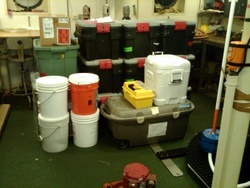
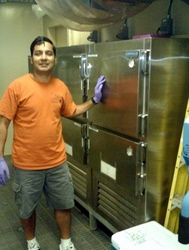
The labs are bustling with movement and eagerness to wrap up loose ends. The scientists are busy preserving and packing up their samples and specimens. I see boxes, pails, coolers, and plastic containers of every shape and form strewn in every corner of the labs.
I begin to wonder how the scientists get their samples safely back to their research facilities in Washington, California, Colorado, Maine, Germany, and France. Do they carry them on the plane? How do they stay frozen? How do they stay fresh? Is it legal to carry rock, water, and bacteria samples across state lines? What about country lines?
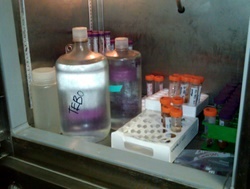
Deb takes time out of his very busy packing schedule to give me a tour of the chaos and tell me how all the freezing and shipping works. He tells me there are three storage areas, a 4° refrigerator, a minus 20° and a minus 80° freezer. The type of preservation you choose depends on what you plan to do with the sample. The bacterial samples require lower temperatures to prevent them from carrying out metabolizing activities. The water samples can be preserved in the higher temperature refrigerator and freezers.
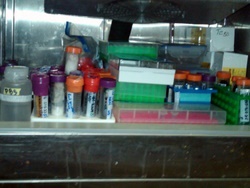
Deb shows me what is inside the 4° refrigerator. It is filled with water samples and sediments of all shapes sizes, and concentrations.
Next, we look into the minus 20 ° freezer. It too is filled with water samples -- primarily from the CTDs and Majors. Deb tells me they are frozen to prevent the water composition from changing.
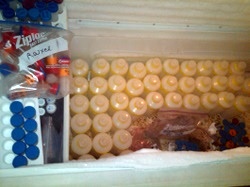
Finally, Deb shows me the minus 80° freezer. Only the bacterial specimens are maintained at such a low temperature to prevent any further metabolic or enzymatic reactions from occurring. The temperature is so low that we weren’t allowed to open the door and look inside.
I asked Deb how the frozen samples are transported from the boat to the scientists’ labs without melting. He says that they are packed in thermal resistant foam and surrounded with dry ice. Then they are sent overnight FedEx. The samples remain frozen until they arrive at their destination. That’s when the real work will begin!

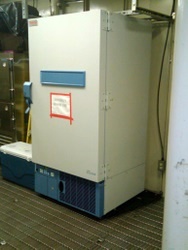
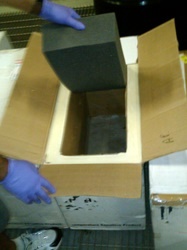
| FeMO4 Cruise Home Page |